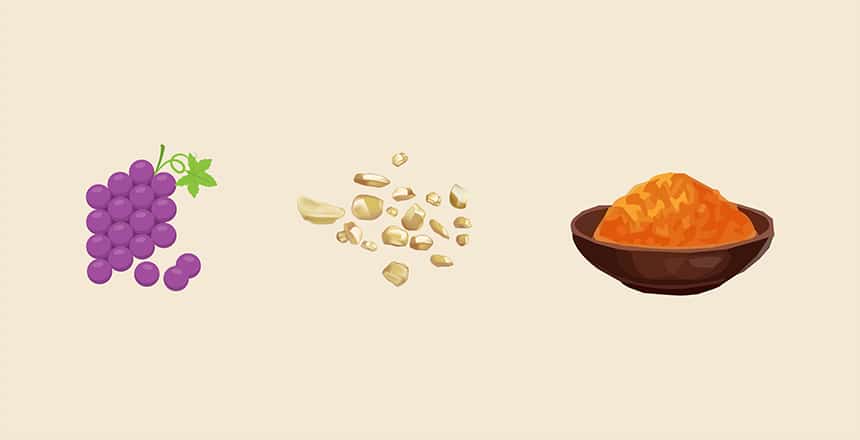Tannins are organic compounds found in various plants, seeds, woods, and fruit skins. But have you ever wondered whether Tannins in wine are different from natural Tannins or not?
If you want to know more about what tannins in wine are, their sources, extraction, roles in wine aging, their potential health benefits, and concerns, let’s follow this article.
Related:
Contents
What Are Tannins In Wine?
Tannins in wine are a group of phenolic compounds that come from grapes’ skins, seeds, and stems. These substances interact with proteins to create a bitter taste sensation, astringency (the feeling of dryness in your mouth), and complexity. Unlike other additives used in winemaking, tannins add flavor, color, and body to the wine and act as a preservative.
What Are the Sources Of Tannins In Wine?

Tannins in wine can come from grape skins, seeds, stems, oak barrels, and additives. The tannin molecules vary in size, shape, and complexity from one source to another; skin tannins are large and formed from many monomers, seed tannins are smaller and consist of fewer polymerized monomers and stem tannins vary in size.
These small tannin polymers from seeds, stems and newer oak can be bitter, while larger ones are astringent. The complexity of tannins can be likened to snowflakes, with millions of combinations forming unique phenolic compounds.
What Do Tannins Flavors in Wine?

Tannins in wine can give a variety of flavors and aromas, from earthy tones to fruity aromas. Depending on the intensity of the tannins, you may experience a temporary “puckering” or drying effect that is similar to eating an unripe fruit or drinking strong black tea. Tannins can also contribute to a wine’s structure and mouthfeel, making the wine feel more full-bodied or textured.
What Are the Pros of Tannins in Wine?
Tannins play an important role in the aging process of wine, providing structure and stability that can improve a wine’s flavor profile with age. They also act as antioxidants, acting as a preservative agent to protect the wine from oxidation. In addition, tannins have been known to contain some health benefits, such as reducing inflammation and improving cardiovascular health.
What Are the Cons of Tannins in Wine?
Are Tannins in Wine Bad for You?. While tannins offer many benefits to wine, too much of them can be bad. Wines with too much tannin can have an overly astringent taste, making wines unpleasant and hard to drink. Additionally, high levels of tannins can lead to headaches or hangovers due to their interaction with proteins in the body.
How to Pair Food With High Amounts of Tannins?
When pairing food with wines high in tannin, consider using ingredients that can soften the bitterness and astringency of tannins. Fats from meats such as steak, pork belly, and duck can help cut through tannins’ harshness. Sweetness can also be appreciated with certain wines containing higher levels of tannins. Desserts like berry tarts and dark chocolate can help balance the bitterness of tannins in wine.
What Wines Have High Amounts of Tannins?
Darker-hued wines typically have higher concentrations of tannins due to the extended contact between the grapes’ skins, stems, and seeds during maceration. Wines such as Cabernet Sauvignon, Nebbiolo, Tempranillo, Merlot, and Syrah are known to have high levels of tannins.
On the other hand, lighter-hued wines such as Riesling, Pinot Grigio, and Sauvignon Blanc typically contain lower levels of tannins.
FAQs About Tannins In Wine
What Wine Has The Most Tannins?
In general, red wines have higher tannin levels than white wines. Among red wines, some of the varieties with the highest tannin levels include Cabernet Sauvignon, Nebbiolo, Syrah/Shiraz, Tannat.
Do Cheap Wines Have More Tannins?
The price of a wine is not necessarily an indicator of its tannin level. Some cheaper wines may have higher tannin levels than more expensive wines due to the use of techniques like extended maceration or aging in oak barrels.
Do Tannins In Wine Keep You Awake?
Tannins in wine are not known to have a direct effect on sleep. However, consuming alcohol, which is present in wine, can disrupt sleep patterns and lead to poor-quality sleep.
Is Chardonnay High In Tannins?
Chardonnay is a white grape variety; white wines generally have lower tannin levels than red wines. While Chardonnay wines can have some tannin content due to the winemaking process, they are generally considered lower in tannins than most red wines.
Conclusion
In conclusion, tannins in wine are an important part of the winemaking process, as they add complexity and structure to a finished product. They also act as antioxidants and help preserve the wine for aging.
While tannins offer many benefits, too much of them can be overwhelming and result in an unpleasant experience for some. Therefore, finding the right balance when using tannins in winemaking is important. With careful consideration and proper food pairing, all can enjoy wines with high amounts of tannins.
